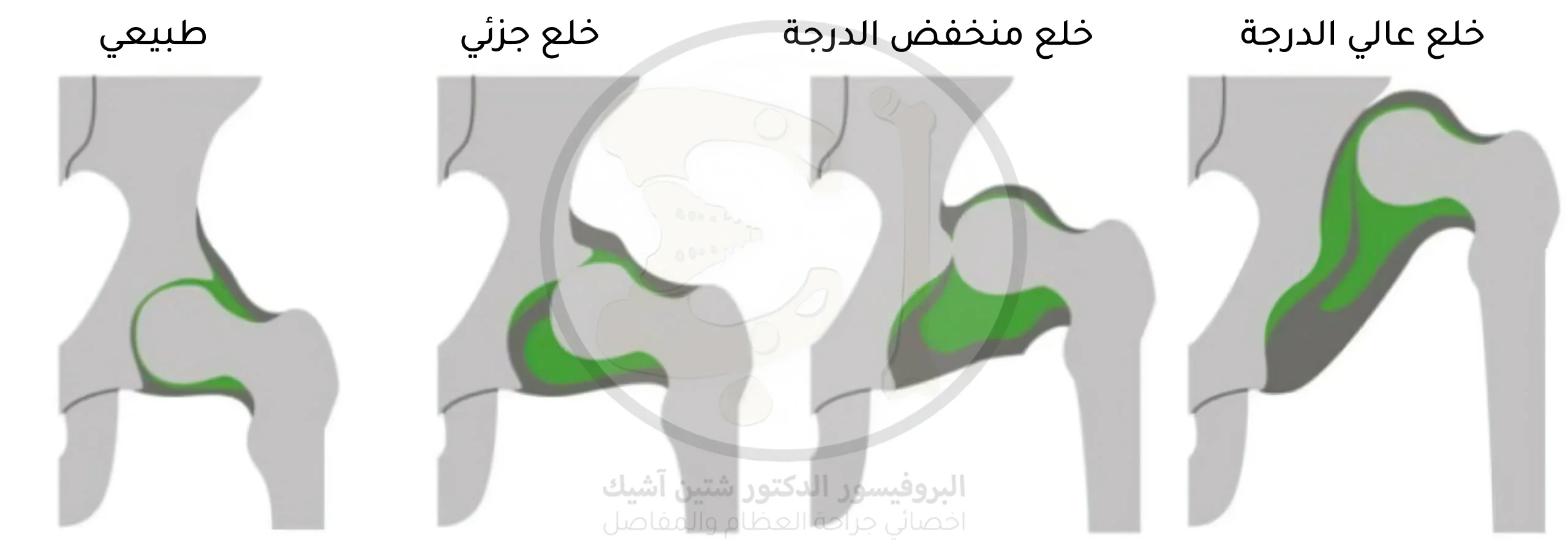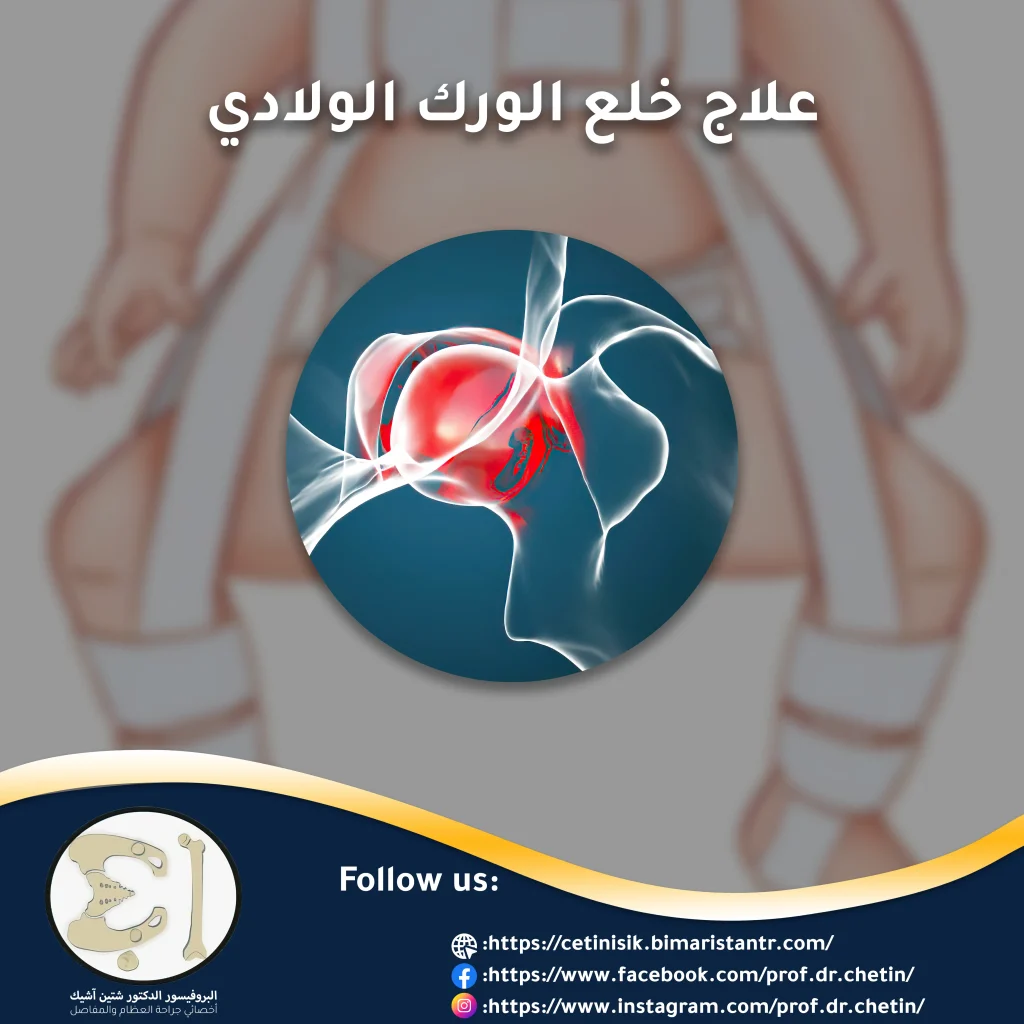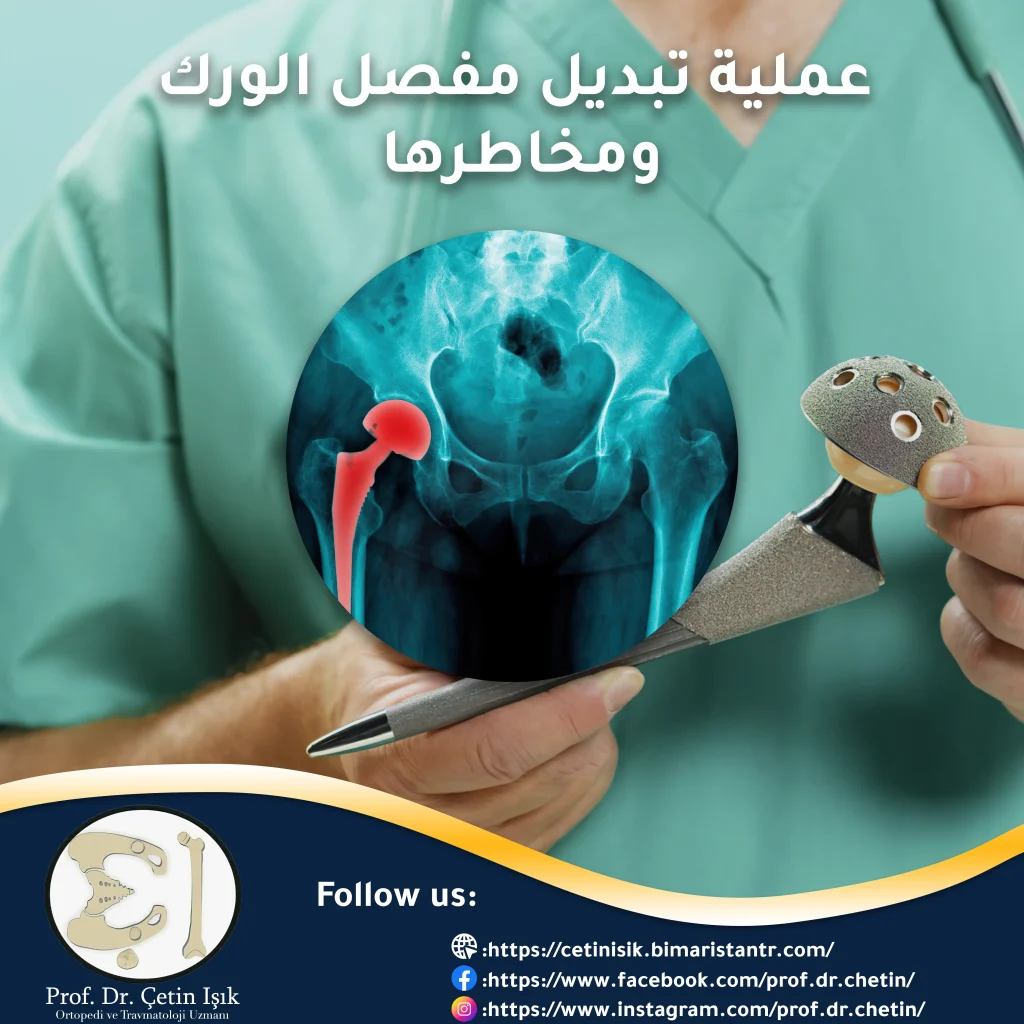The treatment of congenital hip dislocation is one of the most requested treatments due to its impact on the quality of life of the child, and treatment methods for this hip dislocation have developed significantly in recent times.
What is congenital hip dislocation?
Congenital dislocation of the hip, or the so-called Developmental Dysplasia Of The Hip, or Congenital Dislocation Of The Hip for short (DDH), is a defect that affects the hip joint, which connects the head of the femur with the pelvis, and is of the “ball” and “bursa” type.
In this dislocation, the femoral head or “ball” separates from the “bursa” in whole or in part, which requires treatment.
Often the “bursa” is shallow, which puts the “ball” in danger of slipping, and if this problem is not treated in children, the hip joint will not develop well.

This may lead to pain during walking, and arthritis at a young age, so the treatment of congenital hip dislocation is of great importance, especially the early treatment of this dislocation in newborns.
Degree of congenital hip dislocation
There are three main types of congenital hip dislocation:
- Partial dislocation: The head of the bone is contained in the original acetabular cavity, and despite the degree of dislocation, it is not separated from it, and it is considered a mild case.
- Low-grade dislocation: Part of the head of the bone is located in the original acetabular cavity, and the other part is located in the pseudo-acetabular cavity, where the head comes out easily from the joint on physical examination.
- High degree dislocation: In this type, the head is completely out of the original acetabular cavity, and it shifts backwards and
upwards, which is the most severe case.

Causes of congenital hip dislocation
Congenital hip dislocation may affect one or both joints, but birth dislocation is more common in the left hip joint. The following are the most important causes of this disease:
- Children's family history: About a third of people with developmental hip dislocation have a relative with a congenital dislocation of the hip joint as well.
- Congenital disorders: For example, congenital hip dislocation is more common in infants with disorders such as cerebral palsy or spina bifida.
- breech presentation: Babies born in a breech position (with the feet facing down), their hip joints are put under excessive strain, which puts them at risk of dislocation.
- Multiple births: Intrauterine congestion may lead to hip dislocation.
- First born and female neonates: have a higher chance of developing this condition at birth.
What are the symptoms of congenital hip dislocation?
Congenital hip dysplasia does not cause pain in newborns, so it can be difficult for parents to detect this disease.
Parents may notice one of the following common signs of congenital hip dislocation:
- The newborn's hip makes a crackling or popping sound.
- Baby's legs vary in length.
- The hip or leg in one limb does not move as well as the other.
- The skin folds under the buttocks of the child are not straight.
- Lameness in the child when he begins to walk.
When you see one of these signs in your baby, you should go to the doctor for the necessary tests. Detecting and treating a birth defect early means that there is a better chance for the baby to grow and develop normally.
Diagnosis of congenital hip dislocation
Diagnosis and detection of most cases of congenital dislocation is done through comprehensive examinations of children within 72 hours of birth, and again in the 6th or 8th week of birth.
Diagnosis and early detection are very important for the treatment of congenital hip dislocation.
The examination involves gently moving the baby's hip joints to make sure there is no problem or dislocation, as it shouldn't cause them any discomfort.
The examination is performed using two maneuvers, Ortolani's maneuver and Barlow's maneuver, which play an important role in clinical diagnosis.
In the Barlow maneuver, after placing the hip at a right angle, the examiner holds the child's thigh with his fingers on the lateral face of the thigh, and his thumb on the medial face, and gently applies pressure toward the posterior and lateral aspect.
In the normal situation, no movement occurs, but in the event that the hip is dislocated, a “click” will be felt, which expresses the departure of the head of the femur from the joint.
In the Ortolani maneuver, the thigh is abducted, and then pressure is applied to the proximal part of the bone from behind, in an attempt by the examiner to return the head of the dislocated bone to its original place, and the test is positive when a “click” is also felt.

If the doctor or nurse feels that the infant's hip is unstable, the doctor will order certain tests.
There are two examinations that help the doctor diagnose and detect congenital hip dislocation in order to treat it.
Ultrasound examination
This examination is based on the use of waves to draw pictures of the infant's hip joint and detect the disease, the best period for this examination is for an age of less than six months, because most of the hip at this age is still soft cartilage, and it will not appear using x-ray imaging.
X-ray examination
The best time to use this test is after the age of 4-6 months, as the bones have formed enough to be seen using X-rays.
Congenital hip dislocation treatment in Turkey
Treatment after detection is very important for the child. The treatment of congenital hip dislocation, especially early treatment, will give a good opportunity for the child to have a normal childhood free of diseases and problems associated with this dislocation.
The earlier the treatment of hip dislocation after birth, the higher the chances of successful treatment, and the less likely there will be residual dislocation, and the long-term complications that occur due to delayed treatment.
The goal of the treatment is to return the ball to the acetabular bursa in the joint, and keep it there, so that the joint can fully develop and plasticize normally.
The surgeon usually chooses the appropriate method of treatment and intervention based on the age of the child. There are several methods that include treatment:
- Treatment with a medical bracing
- Treatment using a closed reduction with a splint
- Treatment by open reduction (surgery) with a splint
Whether the treatment is a brace or a splint, it is applied to both sides even if only one hip is affected.
Treatment of congenital hip dislocation by wearing a brace
This method is applied to treat the disease in the case of the infant being less than six months old, while older ages require different treatment, the brace is called Pavlik harness It contains a shoulder strap that is placed in a way that connects the shoulder to the stapes bone of the foot.
This puts the infant's legs in a position that keeps the ball head of the femur in the joint tightly in the socket. Most babies will not need other treatment.
The treatment of the child after birth using the band lasts for 6 to 12 weeks, and it is examined once every 1 to 3 weeks, using an ultrasound examination.
During the visit, the position of the belt may be adjusted by the medical staff as needed.
In rare cases, the belt fails to keep the ball of the femur in the hip socket and to treat the hip dislocation. As a result, the doctor may have to resort to the following treatment:
- Closed response (manual placement of the ball in the socket) and splinting
- Open response (surgery) and splinting

Treatment of congenital hip dislocation by closed reduction and splinting
The child needs a closed response if the belt fails to keep the ball in the hip in place, or treatment begins after six months of age.
In a closed reduction, the child is under general anaesthesia. The surgeon injects a contrast dye to see the cartilaginous portion of the ball, then moves the child's femur so that the ball section returns to its place in the hip socket.
A cross-sectional hip splint (gypsum) is then placed to keep the hip in place. This splint lasts for 2-4 months. Sometimes, the orthopedic surgeon also relaxes the stiff muscles in the groin.

Treatment of congenital hip dislocation by open reduction (surgery) and splinting
Dislocation may require surgery if the closed response fails to adequately maintain the ball in the joint, or the child is over 18 months old at birth when treatment begins.
During the surgery to retract the dislocation, the child is under general anesthesia. First, the surgeon makes a cut in the skin, then takes the muscles out of the way to see the dislocation of the hip joint directly, and then puts the ball (the head of the femur) in place in the joint.
The incision is closed with a subcutaneous sutures, which do not need to be removed later.
A cross hip splint is placed to hold the joint in place. Children put the splint for 6-12 weeks. Sometimes an orthopedic surgeon can perform surgery on the pelvic bone to make the hip bursa deeper, especially for children with congenital dislocation who are over 18 months old.
After hip dislocation treatment, children will have regular checkups with their orthopedic surgeon, until they are 16-18 years old, when bony growth is complete.
This helps ensure that the hip dislocation has fully recovered, and that the development of the ligaments and peripheral muscles of the newborn is healthy.
Complications associated with congenital hip dislocation
If left untreated, congenital hip dislocation may progress to a more severe case, and cause painful problems for a long time, such as the following health problems:
- Tear of the acetabular cartilage of the hip: Damage to the cartilage covering the bursa of the hip joint.
- Osteoarthritis: Cartilage damage that causes hip pain and stiffness.
- dislocated joint: Newborn bones slip out of place in the joint.
- unstable joint: Relaxation occurs in the dislocation of the joint causing pain and weakness.
To avoid these complications, postpartum treatment should be expedited in the event of a congenital hip dislocation.
If you encounter any problem about the treatment of congenital hip dislocation or have any questions about the topic, you can Contact us and doctor Çetin Işık will answer you for all your inquiries.
Things to remember about congenital hip dislocation treatment
- Congenital hip dislocation means that a newborn's hip joint has dislocated.
- Congenital hip dislocation affects one out of 600 female births, and one in 3000 male births.
- Treatment depends on a special brace to fix the hip dislocation, or operations and splints, in order to return the joint to its normal position, according to the age of the affected newborn when treated.
Sources:
Common questions
The duration of treatment varies according to the method of treatment. In the case of using Pavlik harness, the treatment lasts for 6-12 weeks, while in the case of a cast, it may last for 2-4 months.
Dislocation is difficult to avoid in most cases, but the risk can be reduced by avoiding wrapping the child too tightly.
The affected child walks on tiptoes instead of the normal heel and toes method, or may sway while walking.
No, it does not cause pain in infants, but it will prevent them from learning how to walk in a normal way.
If left untreated, it will cause pain and osteoarthritis, and a complete hip replacement may be required.
There is a 4% possibility of a late return of congenital hip dislocation.




